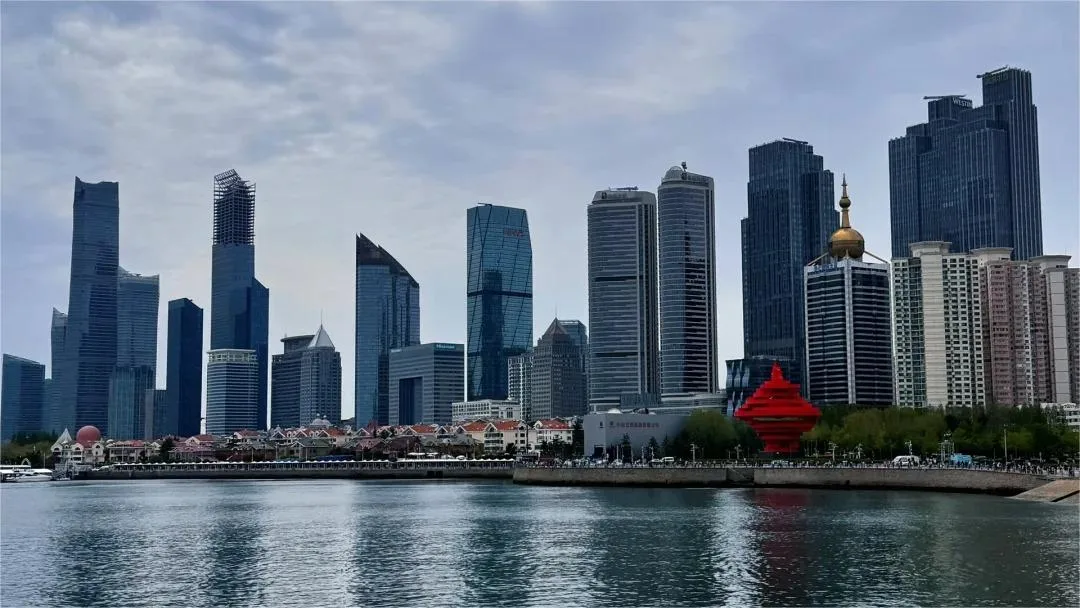May Fourth Square (五四广场), built in 1996, is a prominent landmark in Qingdao, covering an area of 100,000 square meters. This modern square, which seamlessly integrates lawns, fountains, and sculptures, is named after the May Fourth Movement, a significant historical event in China. The square is divided into northern and southern sections by Donghai Road.
The northern section spans 40,000 square meters, with 30,000 square meters dedicated to evergreen lawns. The flowerbeds are bordered with uniquely shaped polished stones, adding an elegant touch to the landscape. One of the key features in this area is a concealed, basin-shaped fountain with a diameter of 28 meters, crafted from polished red stone sourced from South Africa. In the southeastern part of the northern section, visitors can find a granite stone inscription featuring a five-character poem titled “First Tour of Qingdao,” written by Marshal Chen Yi during his first visit to the city in 1954.
The southern section of the square is defined by its length of 220 meters along the north-south axis and a 420-meter curved line along the east-west axis. This area includes an open-air stage, a matrix fountain, a sea-viewing platform, and the iconic “May Wind” sculpture.
The “May Wind” sculpture is the centerpiece of May Fourth Square and serves as its thematic symbol. Designed by artist Huang Zhen, this striking piece features a spiral steel structure that rises into the sky, symbolizing a dynamic, ascending wind. The sculpture has a diameter of 27 meters, a height of approximately 30 meters, and weighs around 700 tons. Its vibrant red color and torch-shaped top symbolize the connection between Qingdao and the May Fourth Movement, emphasizing the revolutionary spirit and patriotic fervor of the event. The sculpture’s design encapsulates the anti-imperialist and anti-feudal sentiments of the May Fourth Movement, celebrating the rise of national strength and unity.
The May Fourth Movement, which took place on May 4, 1919, in Beijing, was a pivotal event in Chinese history. It was a large-scale patriotic movement involving young students, as well as various social groups including the general public, workers, and merchants. The movement was characterized by demonstrations, petitions, strikes, and confrontations against the reactionary government. It marked a crucial moment in China’s fight against imperialism and feudalism, sparking a wave of national consciousness and cultural rejuvenation. The immediate cause of the movement was the failure to address the Shandong and Qingdao issues during the Paris Peace Conference.
Basic Information
| Estimated Length of Tour | 1 hour |
| Ticket Price | Free |
| Opening Hours | 24 hours a day throughout the year |
| Telephone Number | 0086-0532-83886355 |
Location and Transportation
May Fourth Square is situated in the Shinan District of Qingdao City, Shandong Province, China. It is located on Donghai West Road, facing the Qingdao Municipal Government Office Building, and overlooks Fushan Bay to the south. To get there, you can choose one of the following ways:
Bus: Take bus 31 Loop Line, 225, 228, 232, 314, 316, or 601 and get off at the City Government Stop (市政府站).
Metro: The closest metro station to the attraction is May Fourth Square (五四广场) on line 2 and line 3. After getting out of the station from Exit C, you will be standing at the northwest tip of the square.





